We’re sharing our best tips , 101 things to know when planning a trip to Portugal. Check out our ways to save money, including the ATMs you need to avoid, how tipping works and the surprising things you will be charged for in a restaurant.
We share the best apps to download, the best site to order train tickets, what kind of shoes you need and some local foods and drinks you have to try, We include a section for tips on Lisbon, Porto and the Algarve.
Included are some products, including adaptors, and a lesson in learning 1,000 words of Portuguese in two minutes.
General Tips for Planning a Trip to Portugal
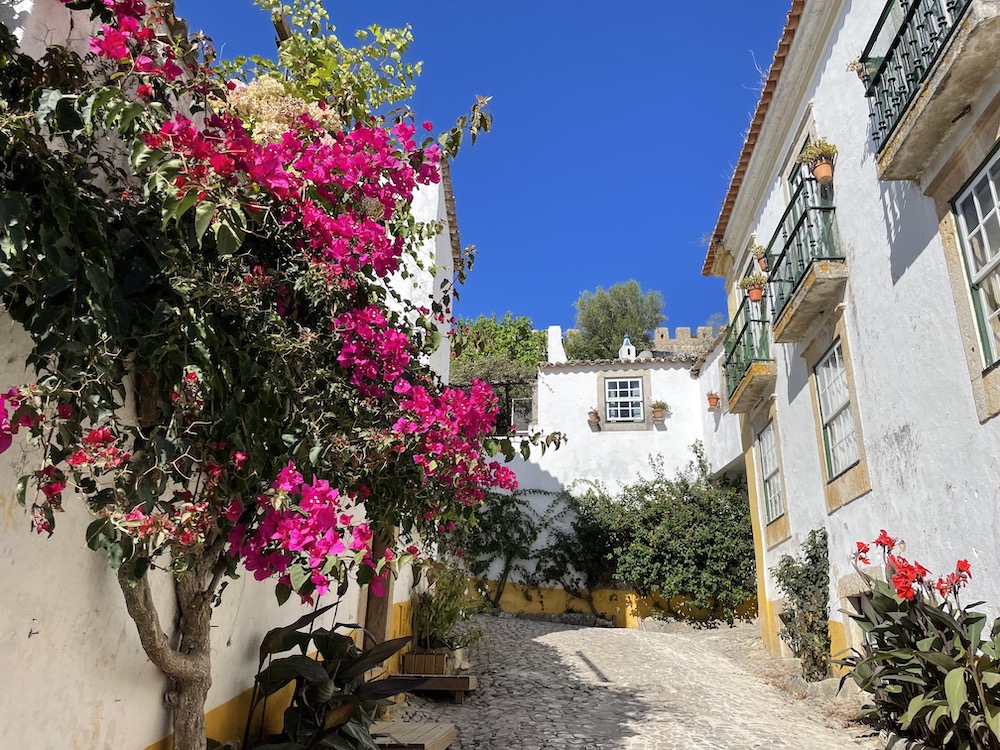
- English is widely spoken just about everywhere we went. This may not be the case in central Portugal but in the more popular destinations you should not have any trouble.
- Temperatures are in Celsius. For an easy way to get an estimate of a temperature in Fahrenheit, double and add 30.
- While you should always be aware of your surroundings and protect your belongings, Portugal is one of the safest countries in the world. We felt safe walking anywhere at any time of day.
- The emergency number in Portugal is 112.
- It is illegal to drive in flip-flops in Portugal.
- You need flat shoes with non-slip soles. Those beautiful tile pavements can be uneven and are very slippery when they are wet.
- Two good Facebook groups to ask questions about your trip are Travel Portugal and Portugal Travel Tips – The Best Travel Tips For Portugal.
- If you want to be able to watch TV shows you can sign up for a VPN. We used VPN Express and paid $12.95 for service for one month. (We didn’t watch much TV, but Chris wanted to catch some sports.)
- If you’re planning on buying wine to enjoy at your accommodations, you’ll need a corkscrew. Portugal produces more than 50% of the cork in the world so you won’t find a bottle with a screw off top.
- While the exchange rate is about 1 to 1 for the U.S. dollar and most things are really affordable, a few things are expensive. Sunscreen, for example, was pricey in the tourist areas.
Money Matters in Portugal
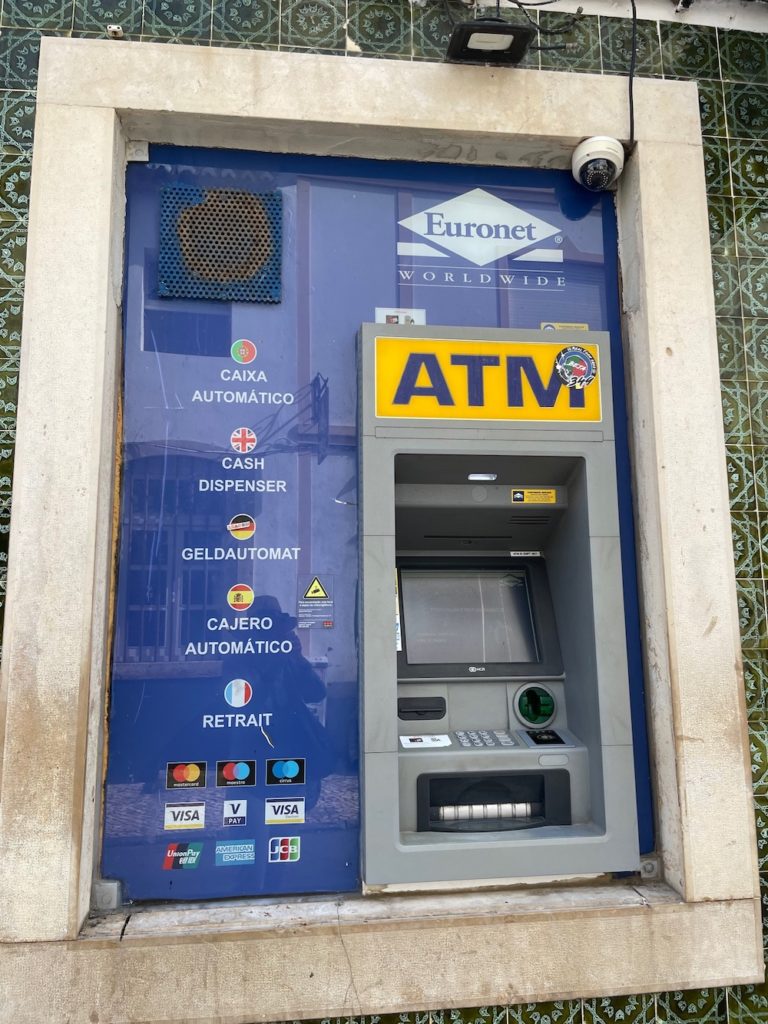
- Many places in Portugal do not accept credit cards, and of those that do, very few take American Express.
- Avoid the Euronet ATMs at all costs. They charge exorbitantly high fees. Instead look for an ATM that is attached to a bank and says Multibanco.
- When taking out cash you will be asked twice if you accept the conversion rate. Say no both times for the best exchange rate.
- When you use a credit card and it asks if you want to convert to euros or U.S. money, always pick euros for the best deal.
- If you are able to use a credit card, you won’t be able to add a tip to it. (For more on tipping, see the section on Food and Restaurants below.)
- The VAT is high in Portugal, typically 23% although some food items are 6% or 13%. You may be eligible to receive a portion of that amount for some purchases back. See details here.
- The VAT is already included in prices you see displayed in most stores. If the dress price tag has 40 euros on it, that is what you will pay.
Apps to Use While Planning a Trip and Traveling in Portugal
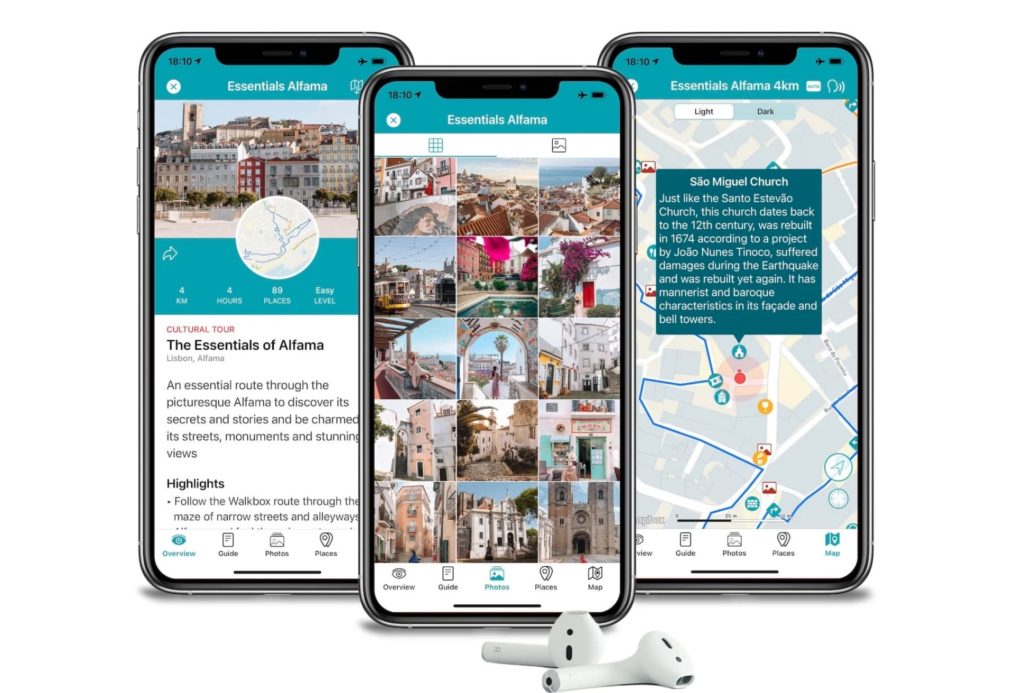
- Google Translate can translate text, using a camera and from conversation. Download Portuguese on the app and you can use it offline.
- Tripit is my go-to app to keep track of all my travel arrangements.
- Uber is widely used in many places in Portugal.
- Bolt is another ride sharing service that is widely used. We compared both and Bolt was often cheaper.
- Rome2Rio is useful for showing you the routes on how to get around by bus, train, plane options
- Walkbox Self-Guided Tours has more than 100 self-guided walking tours in Portugal.
Getting Around and Sightseeing
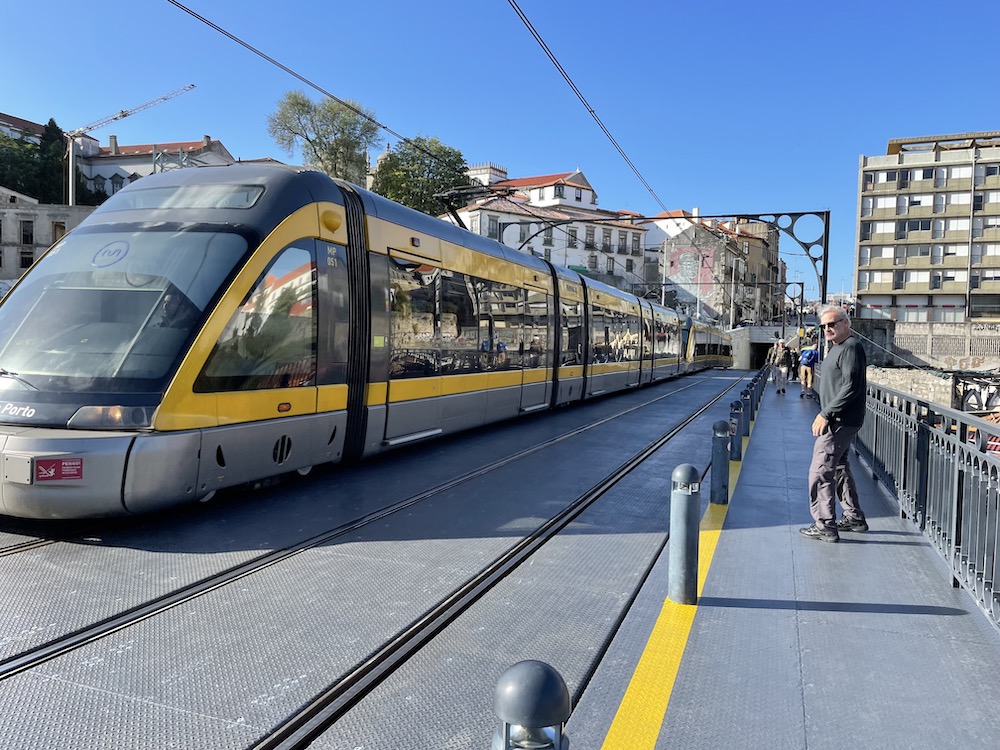
- Portugal is about the size of Indiana and is fairly easy to get around by bus or train.
- To book train tickets go directly to the Comboios de Portugal site for the best fares. Check the discounts page, which includes discounts if you buy in advance, are traveling with a group of 3-9 people or are a senior citizen.
- The price difference between first and second class is minimal and we found it was worth it for more room and access to a snack car.
- When you get your tickets, note that in addition to the seat numbers there is a train car number. There was much confusion over this issue with people sitting in the wrong seats because they were in the wrong car. This is what one of our tickets had on it. 81 is the car number, 35 is the seat number.
Intercidades nº 720 1ª Classe Carruagem: 81 Lugar: 35 Intercidades nº 720 1ª Classe Carruagem: 81 Lugar: 35 - Although the trains claimed to have free wifi it rarely worked. We did not see very many outlets either.
- For commuter trains, like from Lisbon to Cascais, you do not purchase tickets in advance. You buy them at the station on the day of travel or on the train.
- I don’t recommend the seats with the table in between unless you need the table. We tried this on one of our trains and felt cramped in those seats.
- Even if you don’t take trains, go visit some of the beautiful train stations, including the São Bento Train Station in Porto and the Rossio Train Station in Lisbon.
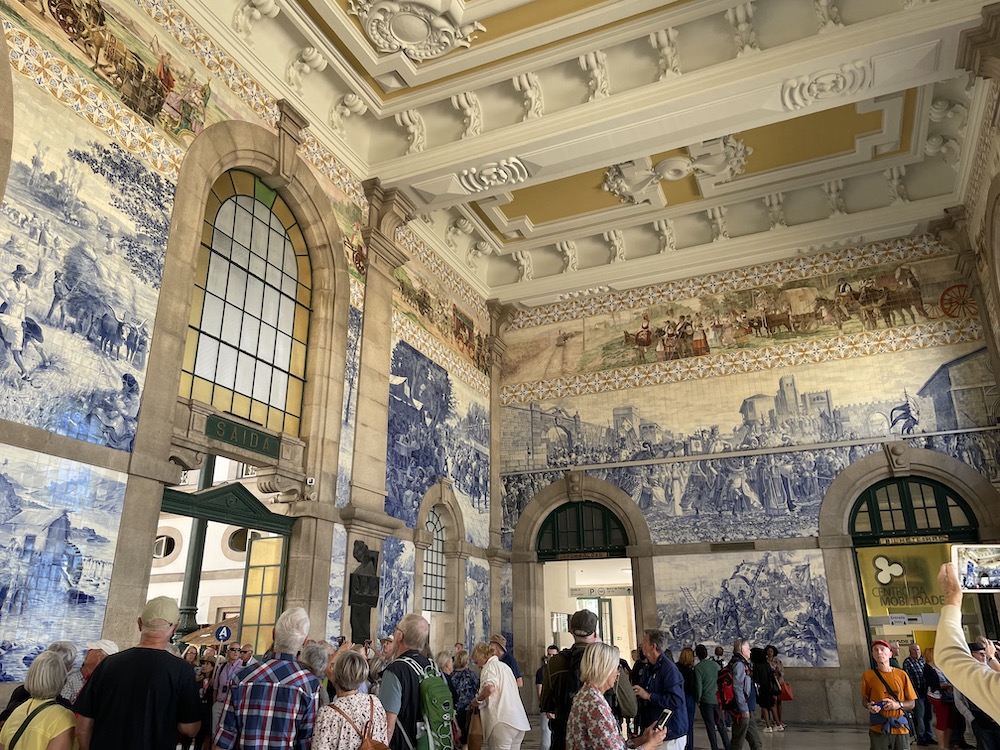
- Portugal has very good public transportation. The Omio site and app are a good place to check out options for trains, buses, flights, ferries, and airport transfers.
- When walking through some streets in the old parts of town in Lisbon and Porto, your GPS may not work too well. Be prepared to get a little lost.
- If you need wifi when walking around in Porto or Lisbon, you can find it at a Starbucks or McDonalds.
- Drivers in Portugal are very good about stopping at crosswalks for pedestrians. You still need to hesitate before crossing to make sure they are going to stop, however.
- If you are lost in an old part of town and want to get to the city center, start heading downhill and you will most likely end up at a river or a square.
- Cycling in Portugal is popular with routes ranging from cliffs to vineyards. You can find more about Portugal’s best cycling routes here.
- Museums, many shops and markets are closed on Monday.
- If you know when you are going to a museum or attraction, try to book your tickets online to avoid lines.
- Always check opening times before you go and don’t rely on the website or what Google tells you.
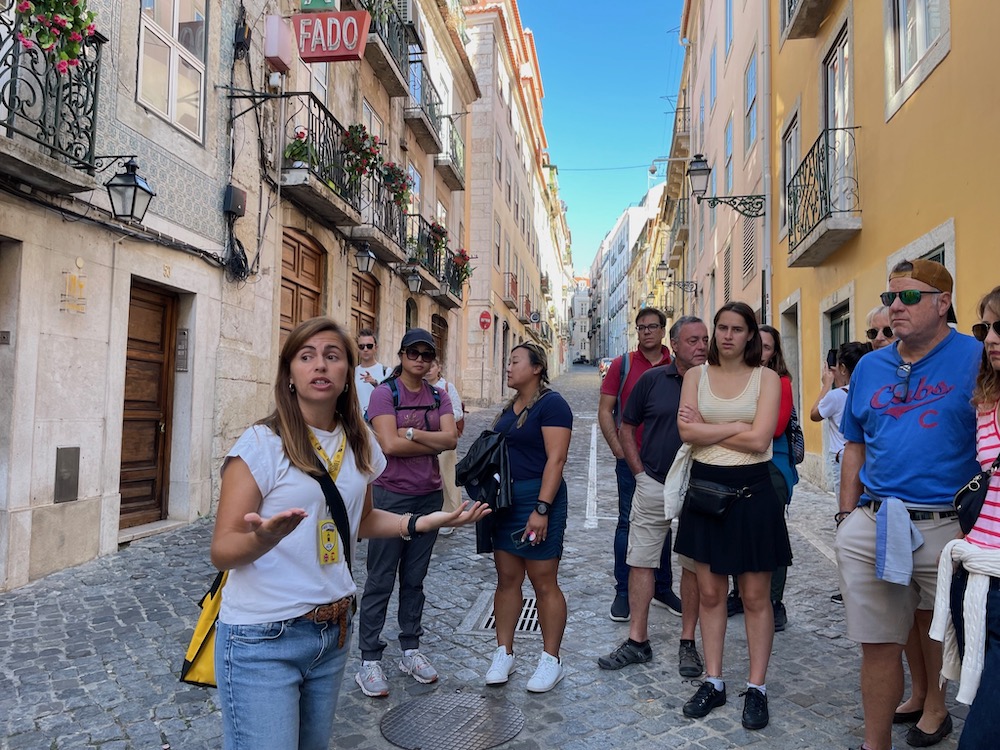
- The best way to learn a new city is to take a free walking tour shortly after you arrive. We took tours in Faro, Porto, Lisbon and Lagos, and every tour was excellent.
- 10-15 euros per person is a good tip for a free walking tour.
- These walking tours can last up to four hours and don’t generally have a bathroom break. You can leave the tour early but don’t forget to tip your guide.
- Take your own water bottle or be prepared to stop in a shop for water. I may have seen one water fountain in the entire country.
- Public restrooms are rare as well. I’m not sure why and haven’t figured out where people go when they are out for several hours, but we had a hard time finding many.
- You sometimes have to pay to use a restroom. They were free at the train stations we went to but we had to pay at Cape Roca and at “The End of the World” near Sagres.
- Take sunglasses with you. There are white tiles on the pavements everywhere in Portugal, which really reflect the sun.
- A word of caution about van tours. Ask about the seat configuration of the vans. I got stuck for hours in a totally tortuous front middle seat of a van with zero leg room despite the company’s claim of “spacious room for travelers.” Do not book a tour with CoolTours in Porto unless you want to risk an uncomfortable tour.
Please see tips on specific locations in the sections below.
General Notes on Dining
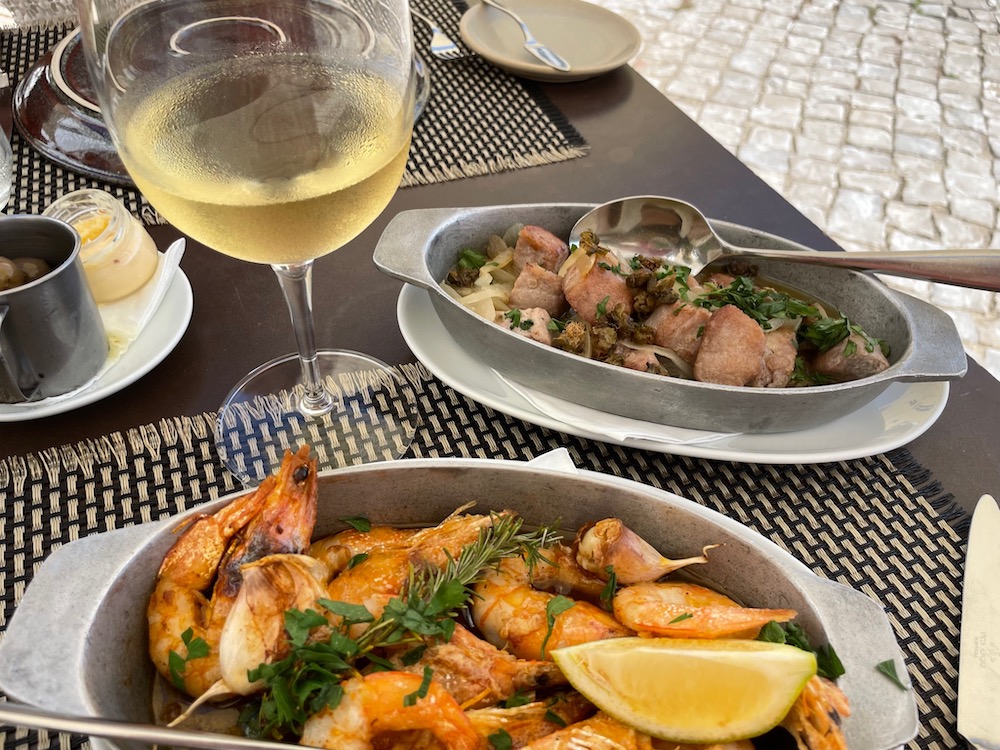
- Portugal has a culture for eating and drinking. The main meal is typically eaten in the middle of the day. As one Portuguese man told us, “In Spain, they stop during the day to sleep. In Portugal, we stop to eat.”
- Portugal is also a coffee culture, with a small one being enjoyed after lunch. These tiny cups are less than a euro.
- Tipping in Portugal is completely different than in the U.S. Tips are not expected in Portugal for guides, drivers, servers or just anybody. We found this a very difficult concept and would have planned our usual 20% tipping but found quite a lot of resistance to it.
We were told that Americans coming and over tipping would cause a problem with their system. We did over tip at first, but then tried to curtail it and just tip around 5-10%. - Many restaurants do not take credit cards, so check ahead or be prepared with cash.
- Even if a restaurant does take credit cards, you can’t add a tip to the bill. Again, have cash to leave a tip.
- Along with the lack of expectation of a tip, you will also find rather relaxed service in restaurants. You may sit at your table 10-15 minutes before being greeted or getting a menu.
- Like in other European countries, you will not be brought a check until you ask.
- The little snacks that arrive at your table are not free. Called couvert, there is a charge for each item. Legally, they are supposed to ask you if you want these items, but that rarely happened. If you don’t want them, ask them to remove them right away.
- Couvert can be very inexpensive, but sometimes it’s not. You may be charged per person and per item. Once we were charged 1.1 euros per each pat of butter.
- Water is not served in restaurants. You need to order a bottle of flat or sparkling water and pay for it. I did get a glass of water once in a restaurant and was charged 1 euro.
- A plate of food will come with a fork and a spoon to serve it, a much easier way to get food on our plate.
A Few Tips About Alcohol in Portugal
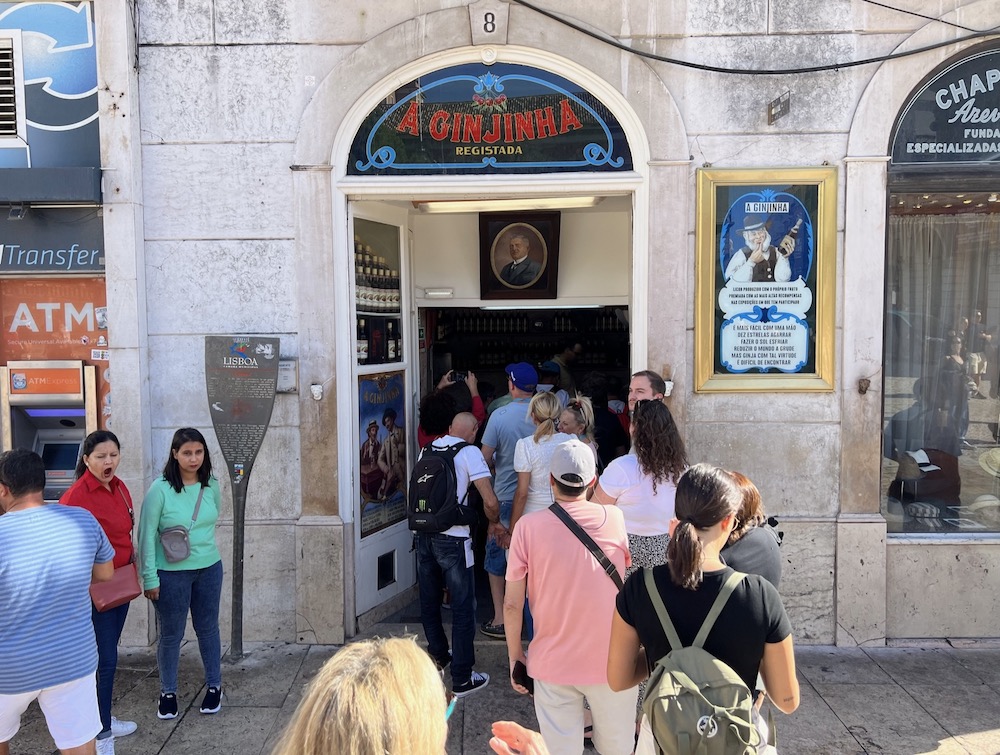
- You will not be out of place drinking alcohol any time day or night.
- Portugal has two main beers, Sagres and Super Bock. Chris, a big beer guy, really liked them both.
- The wine in Portugal is delicious and so inexpensive. Order the house wine and you can’t go wrong. In the dozens of places I did this, there was only one where I wasn’t crazy about the wine. And the best part? The wine was usually 3 euros a glass.
- A popular summer drink in Lisbon is white port and tonic with an orange slice or lemon twist. Like a regular gin and tonic, it is served in a red wine glass.
- Ginja is a tart cherry liqueur served in a shot glass. Our favorite ginja was in Lisbon at A Ginjinha, which is the oldest ginja place, founded in 1840. Line up at the counter and grab a shot filled to the brim. You have one choice to make, with or without the fruit.
- In Obidos and other towns located between Lisbon and Porto, you’ll find ginja served in a small chocolate cup. We had one in the surf town of Nazare and loved it.
Food in Portugal
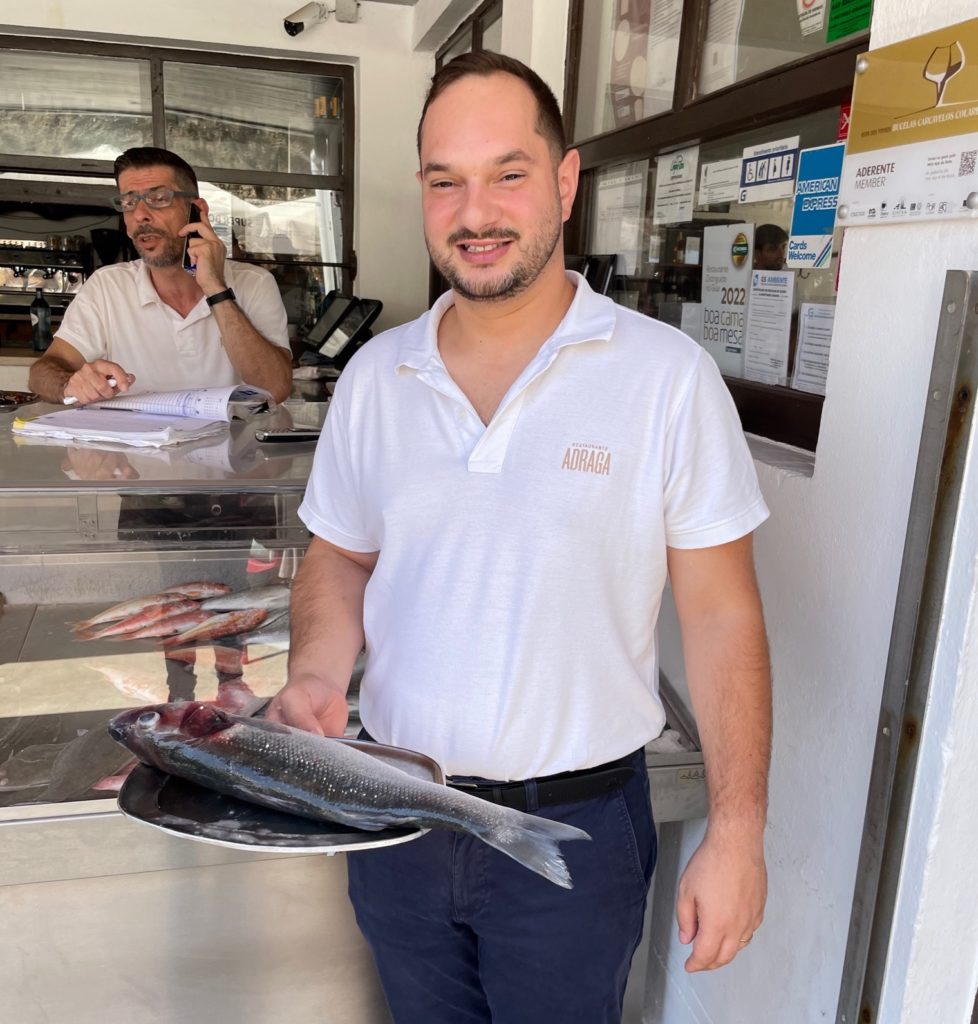
- Seafood is plentiful and fresh in Portugal. It is typically served with heads on, so you will find a lot of little eyeballs on your plate.
- Fish is often sold by the kilo at restaurants, and you can often pick out your own fish from a counter at the front.
- Most fish markets are closed on Mondays, but even if the market is closed, don’t buy fish on Monday as it’s not fresh.
- The Portuguese adore cod and have either 365 or 1,000 recipes for how to cook it. We heard both numbers. It is traditionally served on Christmas Eve, with leftovers piled into a stew and served again on Christmas Day.
- Cod does not come from Portugal, but instead from waters around Norway.
- Fried shrimp is not like what we have in the U.S., which is breaded and cooked in oil. Here it is sauteed. And yes, the heads are still on.
- Oysters are available, but not as beloved in Portugal as they are in the U.S.
- Like in Spain, paella is served in a giant dish, but the difference is the huge amount of seafood. As we were told, “In Spain you have to hunt for the seafood in paella. In Portugal, you have to hunt for the rice.”
- Portugal produces a delicious semi soft unpasteurized sheep’s milk cheese called azeitão, which can only be produced in certain regions. It is served in small rounds and you cut off the top to spoon out the cheese.
- The national pastry of Portugal is pasteis de nata, a small tart made with egg yolks. The most famous ones come from Pasteis de Belem where the bakery used a recipe developed by the monks at the nearby Jerónimos Monastery. The story goes that the monks used egg whites to stiffen their clothes and came up with the recipe to use up all the egg yolks.
- The lines at Pasteis de Belem can grow to hundreds of people. Go early in the day or in the evenings to avoid the line.
A Few Tips on Planning a Trip to Lisbon and Cascais
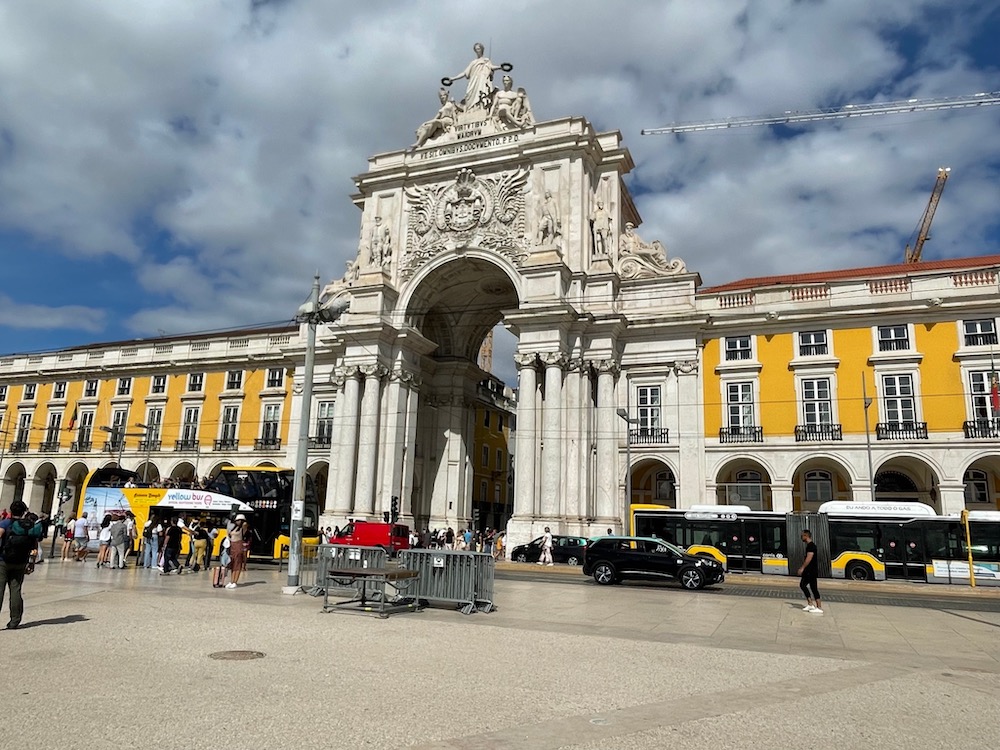
- We stayed at PortoBay Liberdade, a luxury hotel with a fantastic location and delicious breakfast included with our stay. The rooftop bar has beautiful views.
- Watch this video to help you find the rideshare section at the Lisbon Airport.
- If you plan on seeing some main attractions, check out the Lisboa card available online. You can order them and pick up at the airport at a desk past baggage claim next to the exit.
The card gives you free entrance to 35 places and free transportation on subway, buses, trams and funiculars .of CARRIS lines. It also includes the CP train to Sinta, Cascais and the south margin of the Tagus River.
- The Castelo de S. Jorge is not on the Lisboa card. Buy tickets in advance to avoid waiting in line. There’s not a lot of see in the castle but the views of Lisbon are amazing.
- If you only go to one church in Lisbon, check out Igreja São Domingos by A Ginjinha. We had a shot of ginja then visited the church, which is hauntingly beautiful. It was damaged by two earthquakes, one in 1531, and the massive one in 1755 as well as a fire in 1959.
- It’s a bit out of the center of town, but we loved the National Tile Museum housed in a convent founded in 1509. It is included with the Lisboa card.
- We took an excellent free walking tour with Chillout Lisbon, which is offered every day at 10 and 3. The tour lasts between 3-4 hours and you will see and learn a lot about Lisbon. Highly recommend.
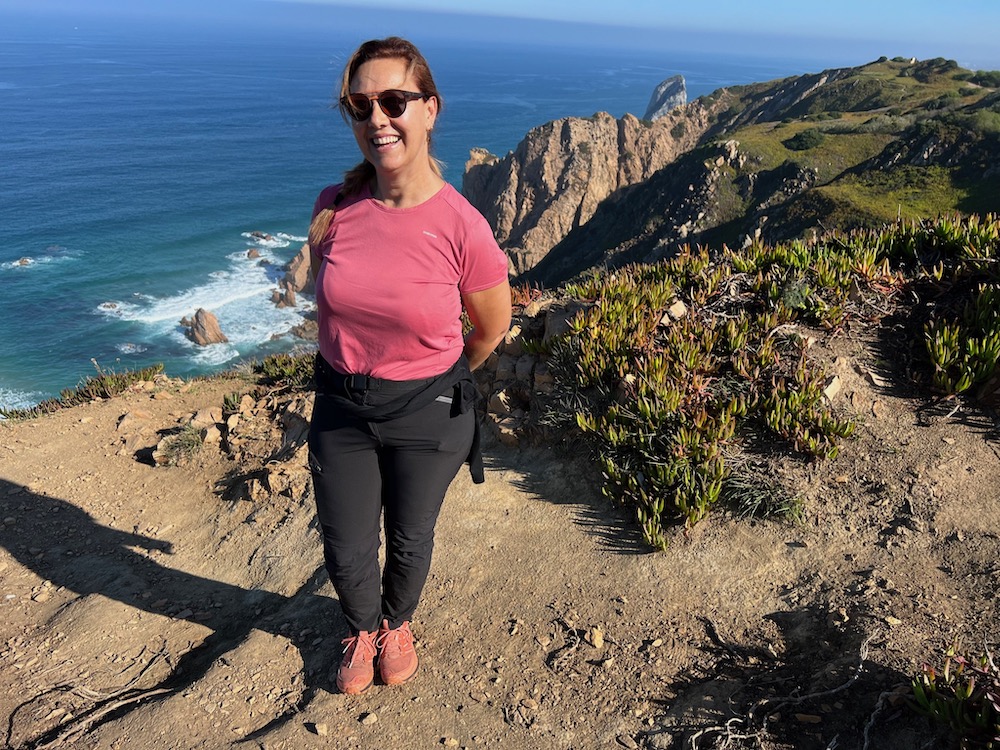
- If time allows, take the 40-minute train ride to the nearby town of Cascais. The beaches are beautiful and I had one of the best meals of the trip at Restaurante Mar do Inferno. President Marcelo Rebelo de Sousa of Portugal lives in Cascais and is famous for posing for selfies with anyone who asks.
- There is a fantastic market at Mercada da Vila, a short walk from the train station in Cascais.
- Hiking fans will want to visit Sintra-Cascais National Park. We had a four-hour tour led by Teresa Oliveira of Walk Hike Portugal that began at Cape Roca, the most western part of Portugal.
- After our hike we ate at Adraga Beach, a fabulous seafood place right on the beach. Teresa picked out the sea bass we had for lunch. (87)
A Few Tips for Planning a Trip to Porto
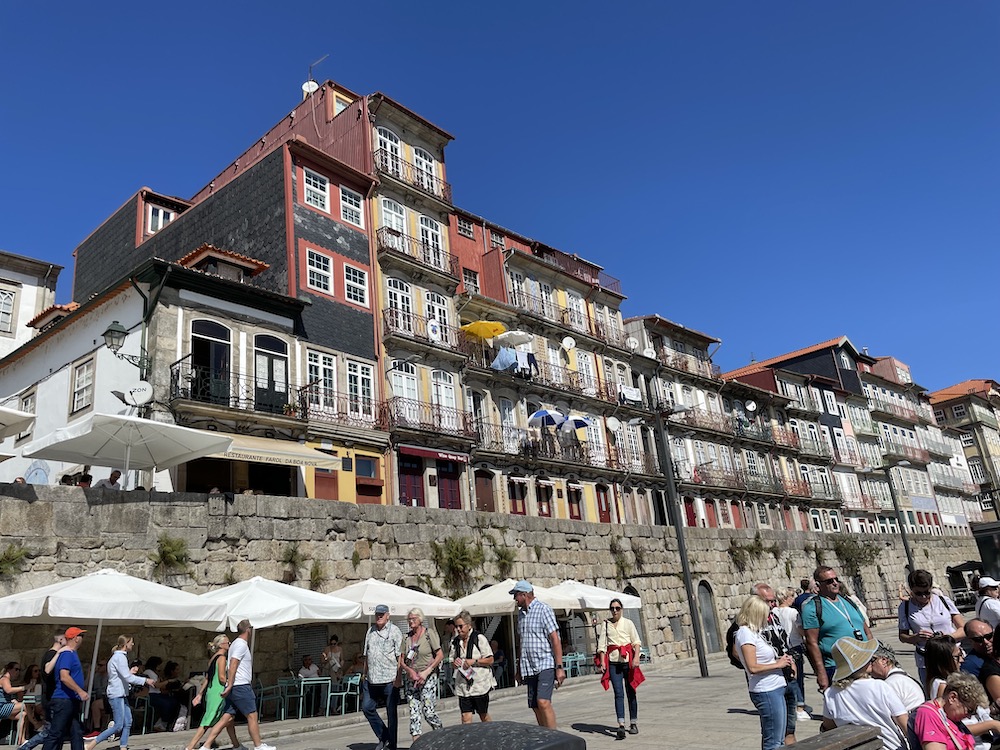
- One of the best and most affordable meals we had in Portugal was at Chama. You must book in advance.
- A popular dish here is cachorrinho, which is a sausage in bread with spicy sauce. Grab one at Snack-Bar Gazela, a tiny place where you may be lucky and grab a seat at the bar.
- Another popular dish is the gut-buster francesinha, a sandwich made with white bread, ham, sausage, topped with an egg and served with sauce.
- Bifana is a traditional sandwich mad with thin slices of pork. We had delicious ones at Conga.
- Cross over the Dom Luis Bridge into Gaia for great views looking back on Porto. The little tiered park by the bridge has excellent wifi too.
- People pay money and line up to see the Livraria Lello, a gorgeous bookstore. Contrary to the story it profits from, it was not the inspiration for Harry Potter as clearly stated by J.K. Rowling. She never went there and didn’t know it existed.
Tips on Planning a Trip to The Algarve
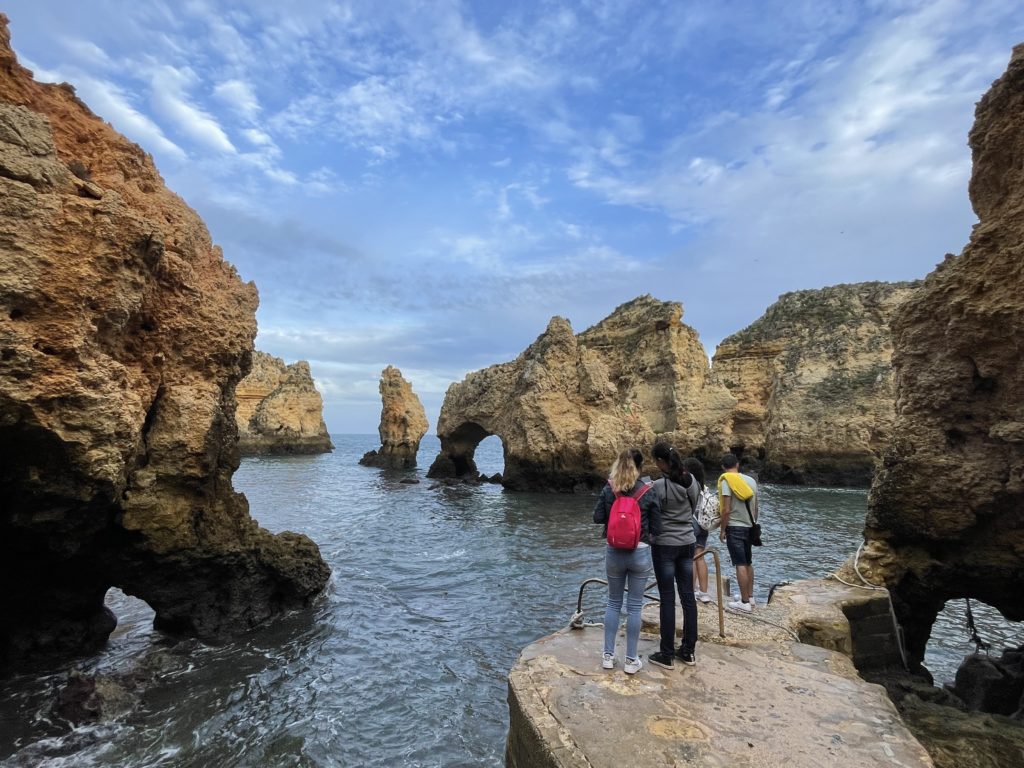
- The Algarve is a 100-mile stretch along the southern coast of Portugal and is popular for its gorgeous beaches, stunning cliffs and golf courses.
- You can rent umbrellas and chairs at several beaches in the Algarve.
- Faro is the capital and home to the airport for the region. Each town has its own personality so do your research to see what town is best for your trip.
Products to Buy When Planning a Trip to Portugal

This set of three plug adaptors were perfect to charge all of our devices. $12.99.
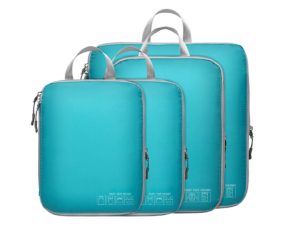
These compression packing cubes kept me organized and I was able to pack a lot more clothes. They come in 9 colors for $27.99.
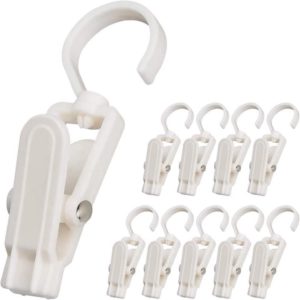
If you do carryon only like we did, these plastic hooks are good for hanging clothes to dry. They also work to clip a straw hat onto a suitcase for an easy way to travel with a hat. $8.99.
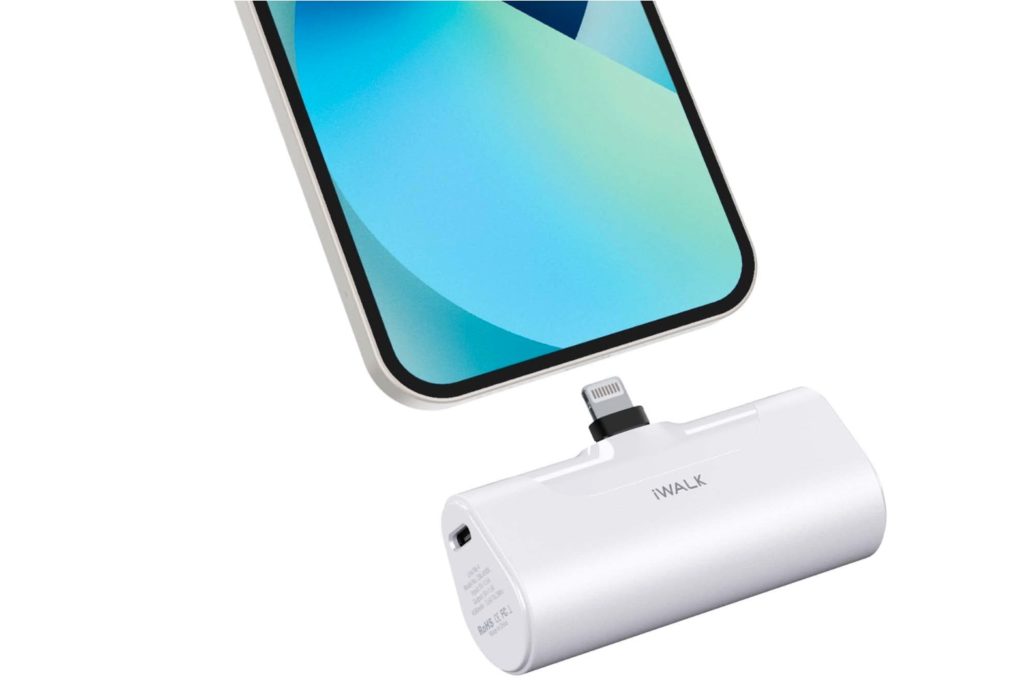
I always travel with a portable power bank. The iWalk is great because it doesn’t need a cable. $29.99.
And lastly, if you’re interested in going to Portugal it will be helpful to learn some of the language and we want to give you a head start.
Learn 100 Words in Portuguese in 2 Minutes
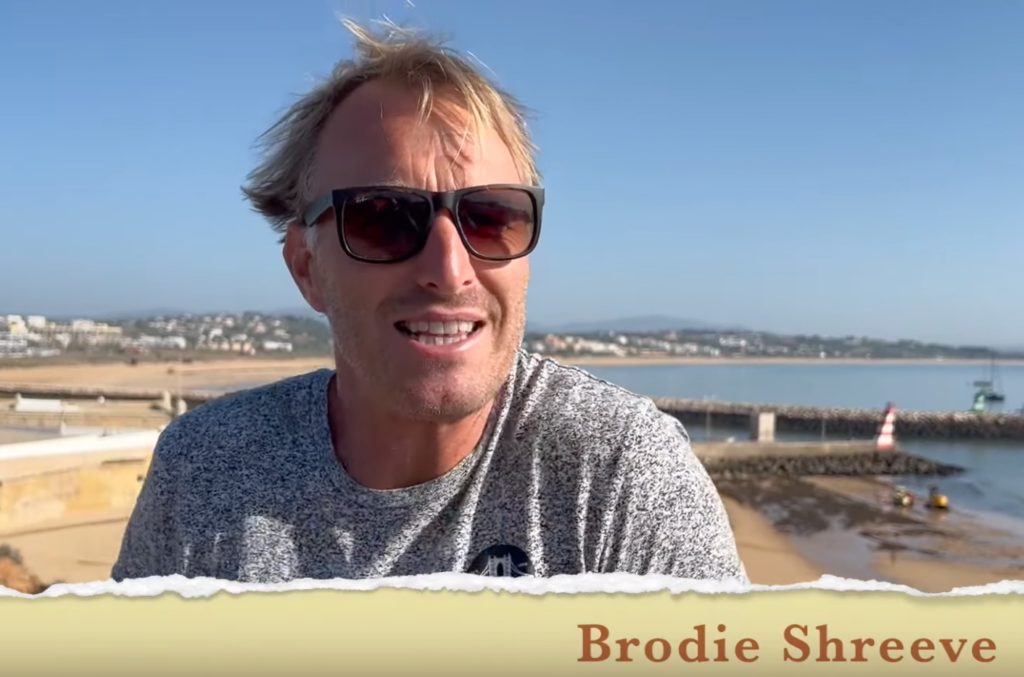
In Lagos we took a free walking tour with Brodie Shreeve. As part of his tour he told us he would teach us 1,000 words in Portuguese in two minutes. We found it so helpful we met with him again and asked if we could video this segment. You can see it on this video, about 10:15 minutes in.
– Jan Schroder, Editor-in-chief
The Travel 100 participates in affiliate programs with various companies. We may earn a commission when you click on or make purchases via links at no additional cost to you. We only recommend products or places we love or think readers will enjoy.

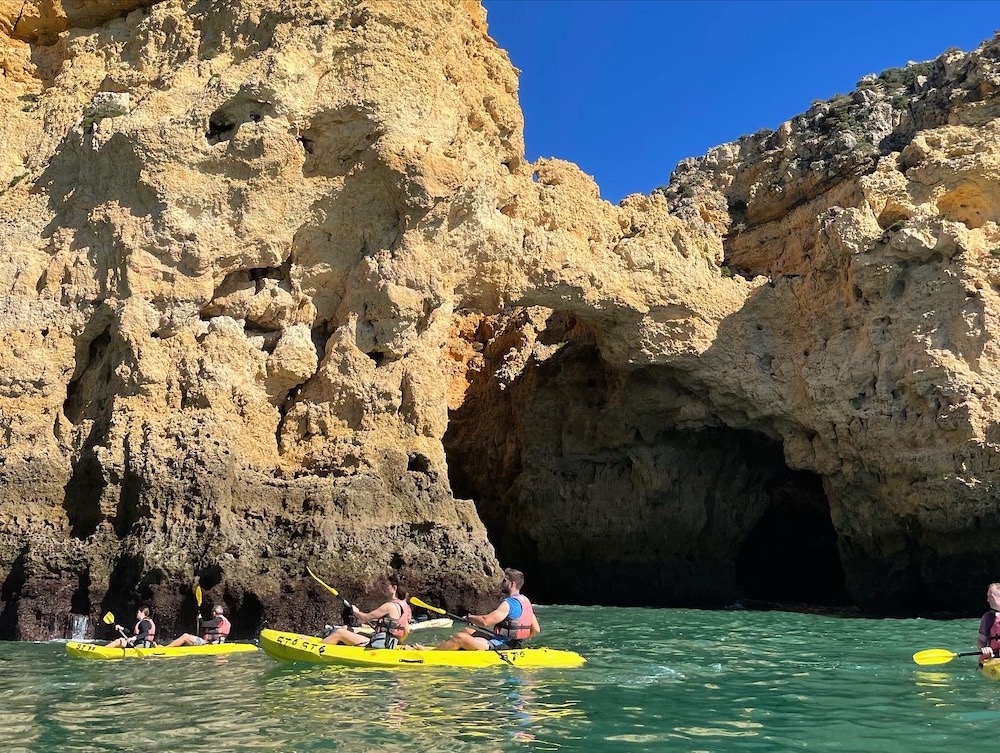
13 comments
[…] Travel Tips […]
Great article! We just got back from 3 weeks traveling inn Portugal. Everything you say is spot on. Thanks for sharing your experience.
Wow! What a great article, Jan! Thanks for gathering so much good info to share.
Jan & Chris,
I have loved following your trip & can’t wait to visit Portugal! I will hold on to all your helpful information for our future travels. Looks like a great place to retire😉
[…] From foreign products, including adaptors, to a lesson in learning 1,000 words of Portuguese in two minutes – read these 101 Tips for Visiting Portugal. […]
[…] From international merchandise, together with adaptors, to a lesson in studying 1,000 phrases of Portuguese in two minutes – learn these 101 Tips for Visiting Portugal. […]
[…] From overseas merchandise, together with adaptors, to a lesson in studying 1,000 phrases of Portuguese in two minutes – learn these 101 Tips for Visiting Portugal. […]
[…] From overseas merchandise, together with adaptors, to a lesson in studying 1,000 phrases of Portuguese in two minutes – learn these 101 Tips for Visiting Portugal. […]
[…] From foreign products, including adaptors, to a lesson in learning 1,000 words of Portuguese in two minutes – read these 101 Tips for Visiting Portugal. […]
[…] Travel Tips […]
[…] Travel Tips […]
[…] you’re heading to Portugal, (lucky you!) be sure to check out our 101 tips that include everything from currency to […]
[…] you’re heading to Portugal, (lucky you!) be sure to check out our 101 tips that include everything from currency to […]